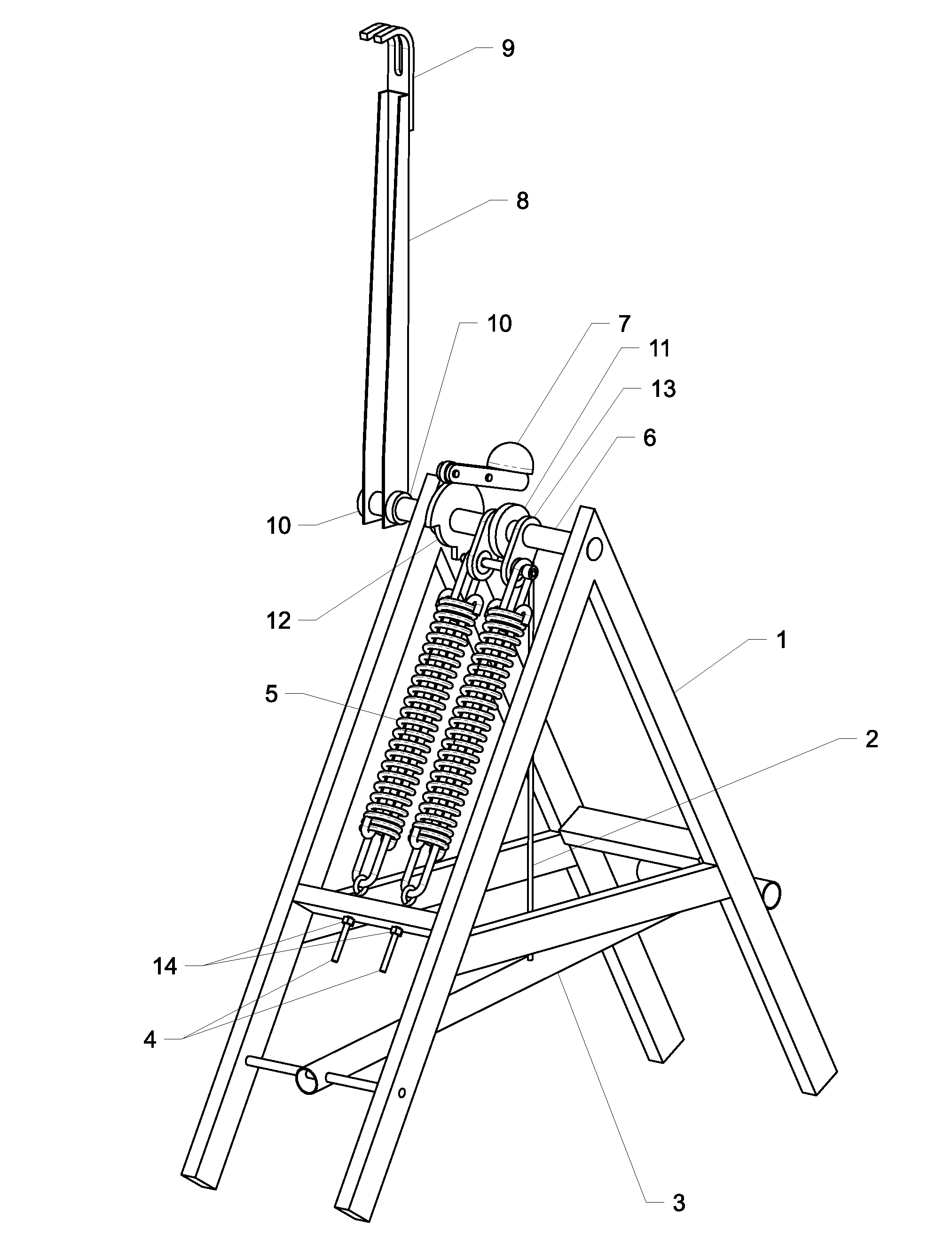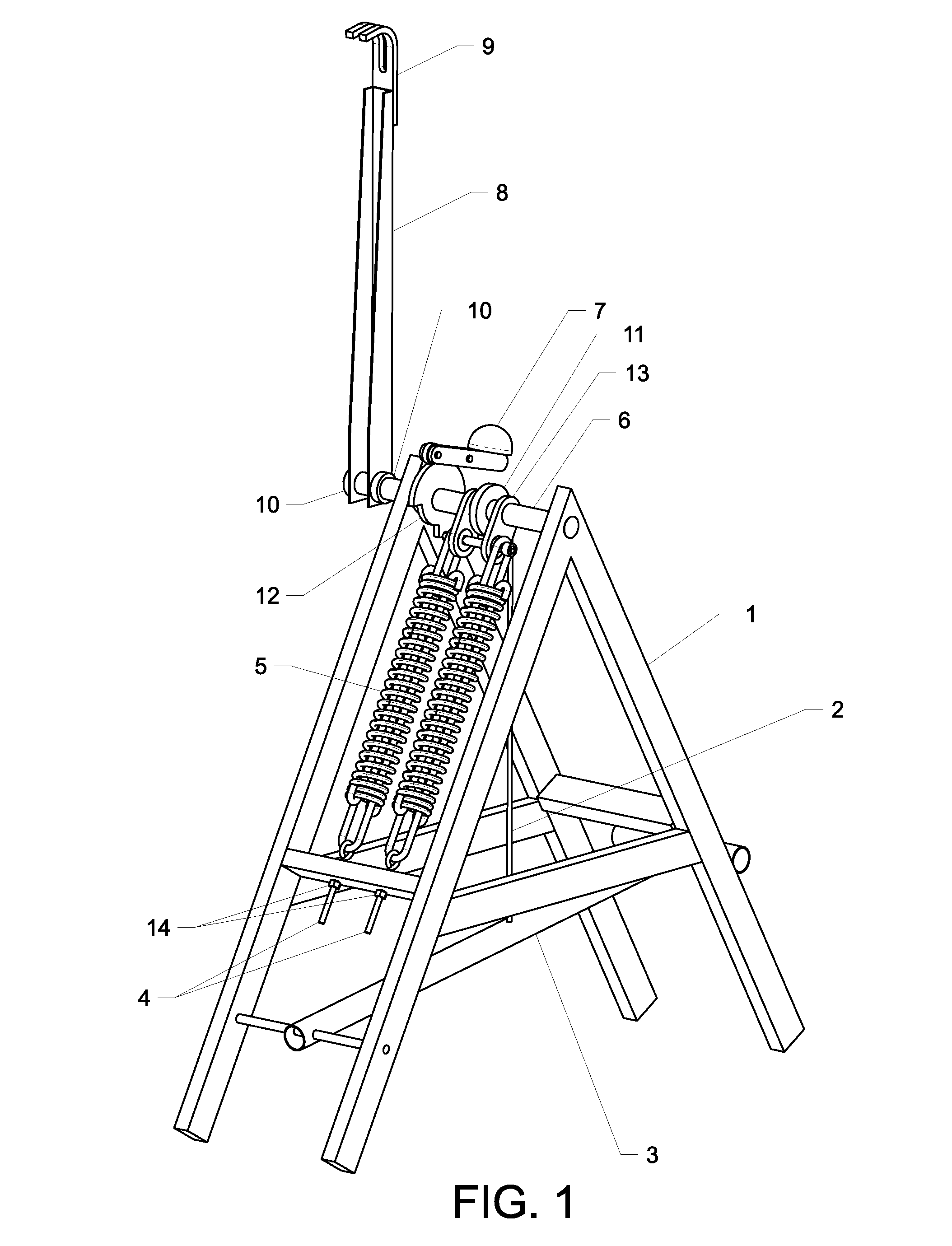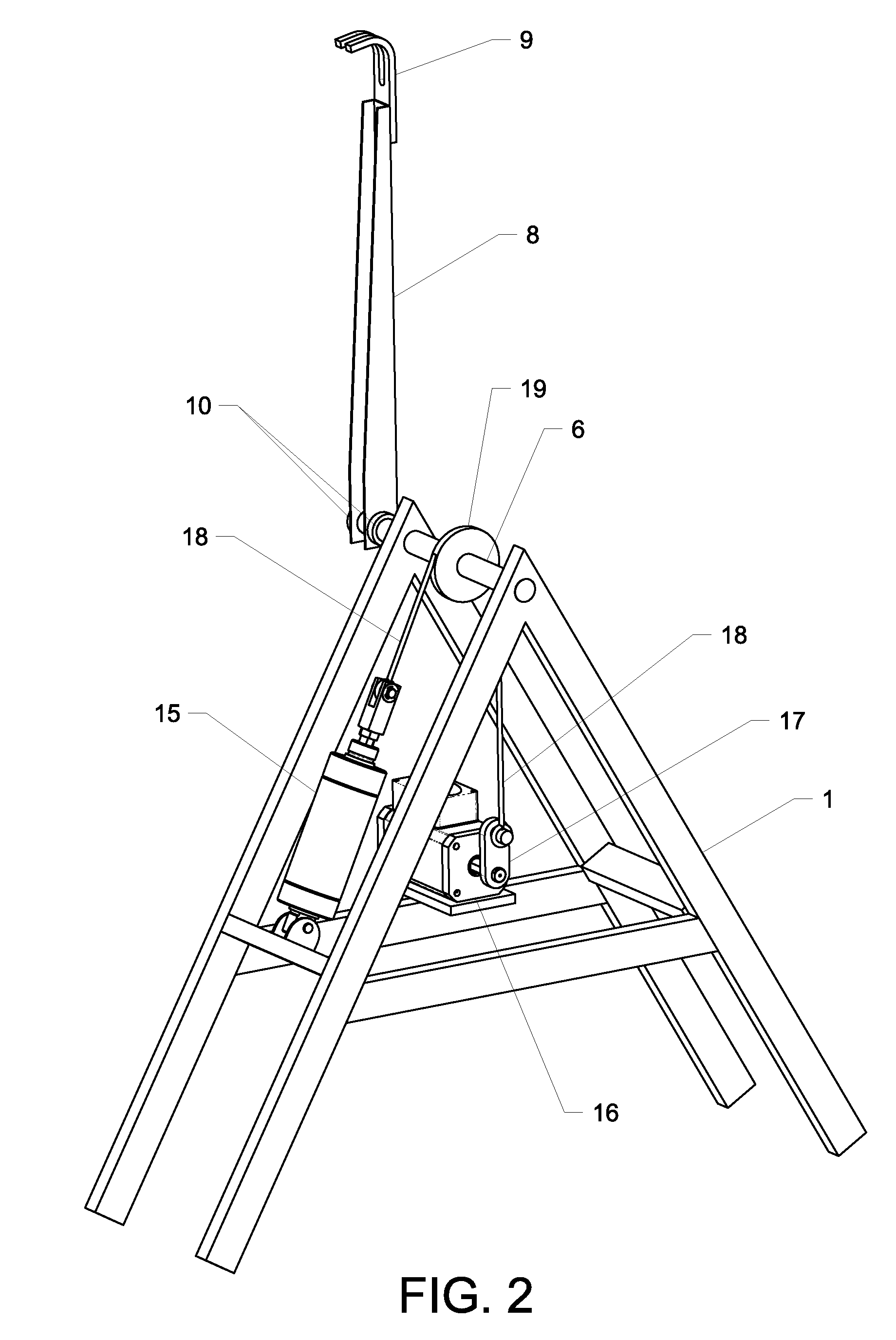Spin Inducing Arm Pitching Machine
a technology pitching machine, which is applied in the field of spin inducing arm pitching machine, can solve the problems of lack of realism, lack of realistic simulation of human pitcher to batter, lack of prior art wheeled inventions, etc., and achieves the effect of quick adjustment of the spring rate, and reducing the energy input ra
- Summary
- Abstract
- Description
- Claims
- Application Information
AI Technical Summary
Benefits of technology
Problems solved by technology
Method used
Image
Examples
Embodiment Construction
[0088]All the following descriptions and embodiments relate to the same invention, an arm-type pitching machine which can control the spin, velocity and location of a pitched ball, to the degree and by means the prior art has not achieved nor anticipated. For simplicity, in this specification and claims the words pitch, pitcher and pitching is understood to mean not only pitching a ball to a batter, but also throwing a ball in various ways to a fielder, tennis player and other persons desiring to practice any game, sport or activity involving any object which may be propelled by the subject machine and process.
[0089]Turning to FIG. 1, indicating a foot-powered version of the machine, including a basic frame 1, to which is incorporated a cable 2 connected to a foot pedal 3. Connected to the frame are one or more threaded fasteners, such as eyebolts 4, which serve to secure one or more springs 5 which provide the twisting power or torque upon a rotating shaft 6. This twisting power is...
PUM
 Login to View More
Login to View More Abstract
Description
Claims
Application Information
 Login to View More
Login to View More - R&D
- Intellectual Property
- Life Sciences
- Materials
- Tech Scout
- Unparalleled Data Quality
- Higher Quality Content
- 60% Fewer Hallucinations
Browse by: Latest US Patents, China's latest patents, Technical Efficacy Thesaurus, Application Domain, Technology Topic, Popular Technical Reports.
© 2025 PatSnap. All rights reserved.Legal|Privacy policy|Modern Slavery Act Transparency Statement|Sitemap|About US| Contact US: help@patsnap.com



